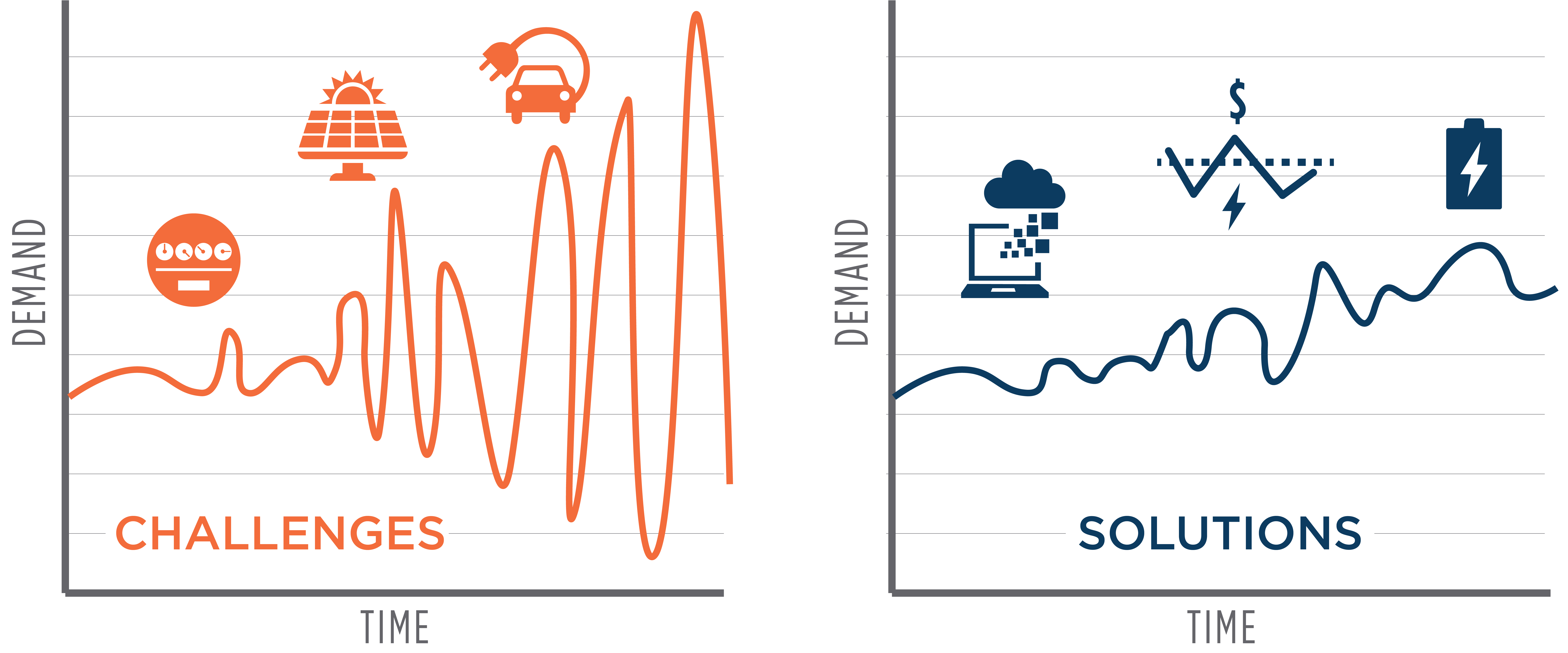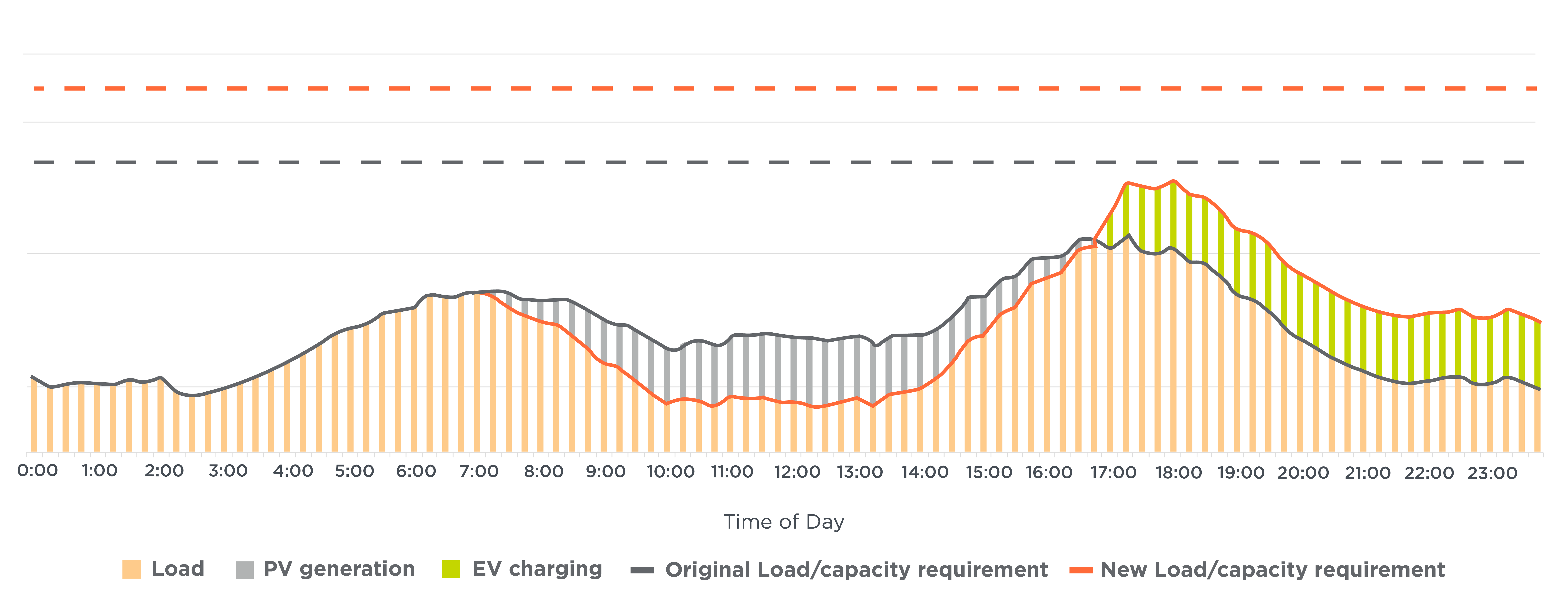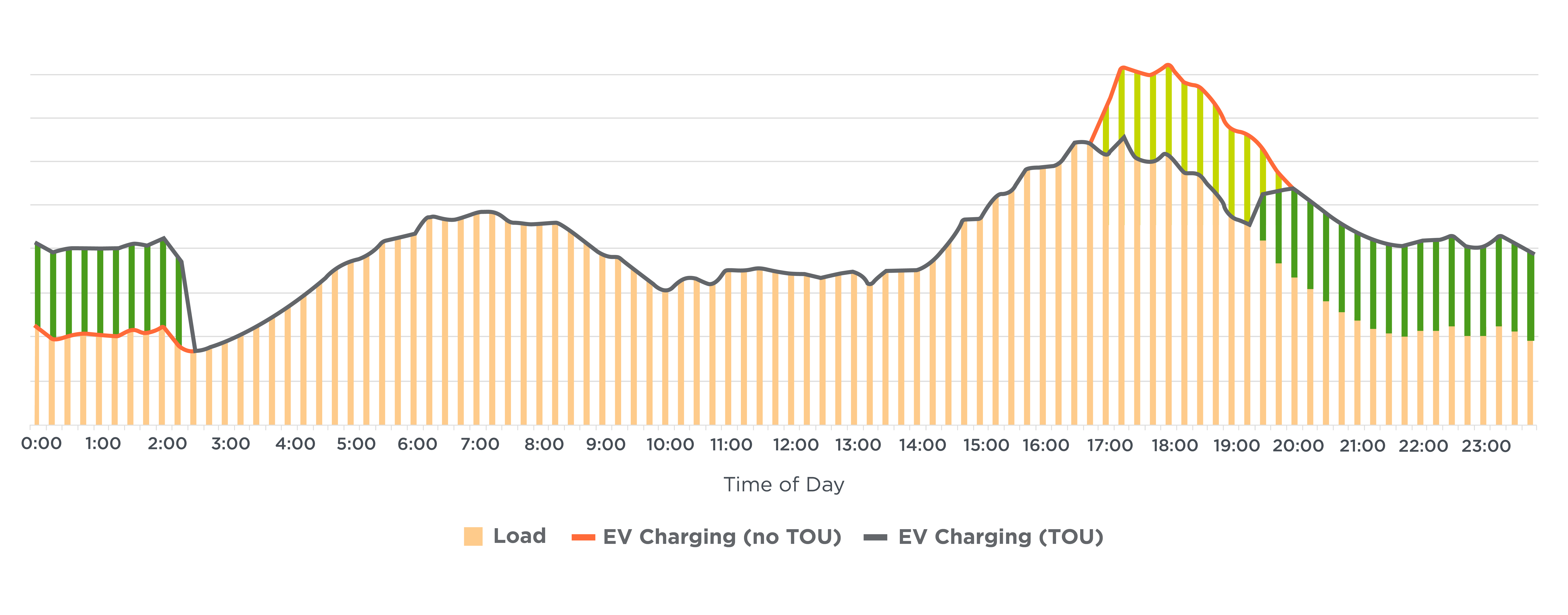Replacing internal combustion engines with electric motors shifts the economics from the gasoline industry to electron providers. However, electric vehicles (EVs) are meant to move around and tap the power grid (with as much demand as multiple average households) wherever they charge when the battery gets low. Depending on how prevalent EVs are in an area, this could become the equivalent of entire neighborhoods popping up and going away at various points across the grid, worsening the utilization factor for the assets that must be deployed to serve the local peak load.
Similarly, the deployment of solar photovoltaic (PV) systems presents both benefits and threats to utilities. The farther power generation is from a load, the more electrons are lost to heat as they move along miles of transmission and distribution assets. Electrical proximity between generators and loads, such as rooftop PV serving a residential load, alleviates the burden on power delivery assets that would otherwise have to bridge centralized generation and load sinks. Conversely, the natural intermittency of solar irradiance due to cloud coverage can translate into power quality issues for the electrical neighborhood. Generation-to-load mismatch may cause reverse power flow, which has protection coordination implications, and revenue erosion, which conflicts with the conventional utility business model.







